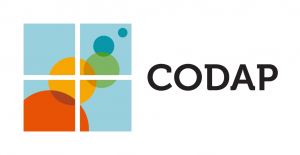Introduction:

Decommissioning Notice: The IPUMS Terra data access systems have been decommissioned as of October 2022. The exercises and lesson plans linked below include self-contained datasets and will still work. It is no longer possible to get new custom extracts in the CODAP data structure. See more information about continued access to other versions of the IPUMS Terra data on our decommissioning page.
IPUMS Terra has partnered with Concord Consortium to provide sample data for classroom instruction via Concord’s Common Online Data Analysis Platform (CODAP) application. CODAP provides a drag-and-drop web-based interface for secondary students to explore, visualize, and analyze real-world data.
IPUMS Terra data are free of charge and cover a wide range of population and environmental topics. Population data are from U.S. and international censuses, and cover demographics, education, employment, income, housing and other areas. Environmental data include land cover, agricultural land use, and climate.
Population census data are available as microdata and as aggregate data. Microdata are individual-level, with each record describing a specific person. Aggregate data describe the population characteristics of geographic areas, such as states or districts. Microdata are most readily available for the U.S. Most of the sample datasets provided below incorporate U.S. microdata. Environmental data can be integrated with either microdata or aggregate data, describing the geographic units described in the aggregate data or the units in which the individuals described by microdata live.
The sample data sets linked below have been already been integrated into CODAP’s data analysis platform that secondary educators can incorporate into their classroom instruction.
Educational Standards:
Lessons incorporating CODAP and IPUMS Terra data can be designed to satisfy a wide range of educational standards. The data and sample lesson plans contain material for a range of curriculums. The most common applications are for social studies and math coursework, including geography, government, and statistics. For a list of applicable common core and selected state standards, see the standards page.
Getting started:
Introduction to using IPUMS Terra and CODAP. -- For educators who have not previously used the CODAP application, this tutorial covers the basics of using the system with IPUMS Terra data about people in Minnesota in 2010. This tutorial introduces the layout of CODAP, making graphs with table attributes, and finding means and medians.
Further analysis by making two graphs -- Building on skills developed in the Introduction, users will make multiple graphs and learn to sort, again using data about people in Minnesota in 2010.
Analysis of a more narrow IPUMS Terra data set in CODAP (12/14/16) -- This tutorial provides additional examples of sorting graphs by attributes and shows how to add notes to a CODAP document. The data set is narrowed to include only college graduates, from Minnesota, in 2010.
Exploring data at different levels using IPUMS Terra data and CODAP (12/14/16) -- This tutorial uses data on people in four different regions in California (in 2000) to explore hierarchical relationships. Users will utilize CODAP's features for handling hierarchical organization in data to compare and contrast population characteristics at the levels of geographic regions, households, and individuals.
Comparing differences by neighborhood in one city (12/14/16) -- This tutorial includes population microdata from adjacent neighborhoods within a city (Oakland, California, 2010), enabling the user to explore how characteristics vary across nearby places.
Sample lesson plans
To help you discover how IPUMS Terra and CODAP can be used in classroom instruction, we have created some sample lesson plans for Geography and Statistics courses. Feel free to use these lesson plans as-is, or modify them to meet your needs.
Looking at data about persons in different parts of the US with IPUMS Terra data in CODAP.
If you have suggestions, comments, or questions contact ipums@umn.edu.
This material is based upon work supported by the National Science Foundation under Grant Number DRL-1435470.
